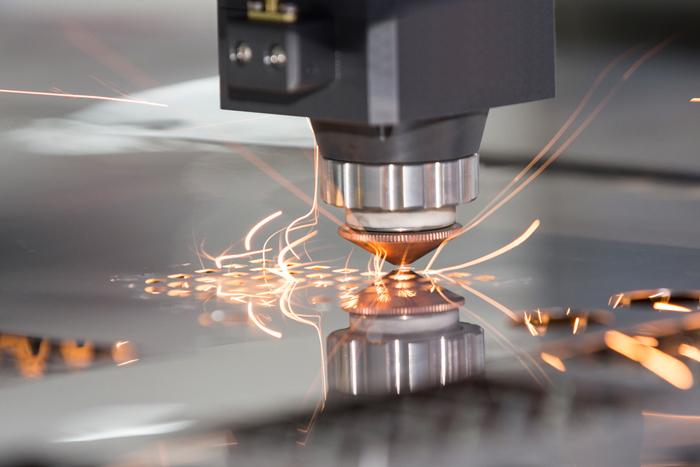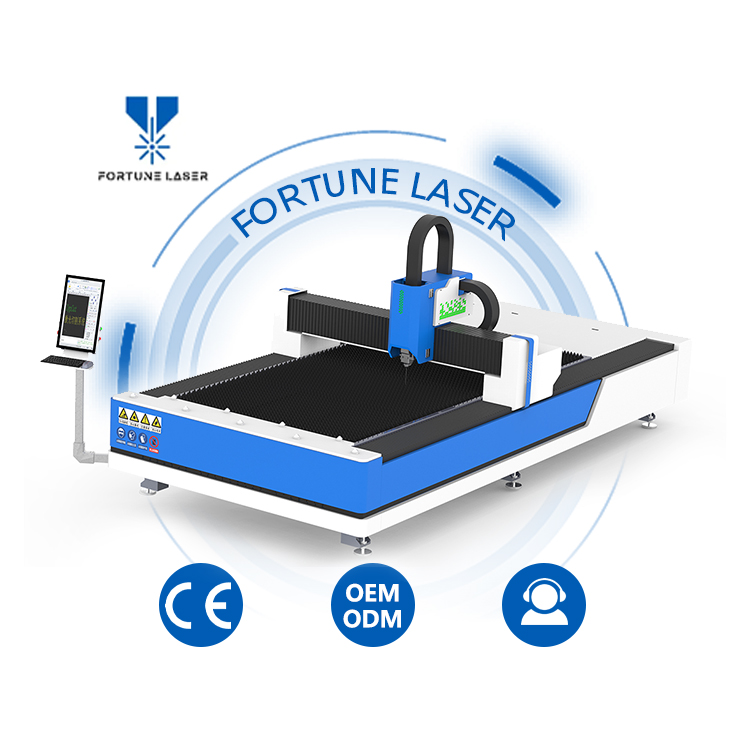Are you looking to fabricate precise, complex aluminum parts with a flawless finish? If you’re tired of the limitations and secondary cleanup required by traditional cutting methods, laser cutting might be the advanced solution you need. This technology has revolutionized metal fabrication, but aluminum presents unique challenges due to its reflective nature and high thermal conductivity.
In this guide, we will explore everything you need to know about laser cutting aluminum. We’ll break down how the process works, the key benefits, the step-by-step workflow from design to finished part, and the essential equipment you need. We’ll also cover the technical challenges and how to overcome them, ensuring you can achieve a perfect cut every time.
What is Laser Cutting Aluminum and How Does It Work?
Laser cutting is a non-contact thermal process that uses a highly concentrated beam of light to slice through materials with incredible accuracy. At its core, the process is a perfect synergy between focused energy and mechanical precision.
-
The Core Process: The process starts when a laser generator creates a powerful, coherent beam of light. This beam is guided through mirrors or a fiber optic cable to the machine’s cutting head. There, a lens focuses the entire beam onto a single, microscopic point on the aluminum’s surface. This concentration of energy instantly heats the metal past its melting point (660.3∘C / 1220.5∘F), causing the material in the beam’s path to melt and vaporize.
-
The Role of Assist Gas: As the laser melts the aluminum, a high-pressure jet of assist gas is fired through the same nozzle. For aluminum, this is almost always high-purity nitrogen. This gas jet has two jobs: first, it forcefully blows the molten metal out of the cut path (kerf), preventing it from re-solidifying and leaving a clean, dross-free edge. Second, it cools the area surrounding the cut, which minimizes heat distortion.
-
Key Parameters for Success: A quality cut is a result of balancing three critical factors:
-
Laser Power (Watts): Determines how much energy is delivered. More power is needed for thicker materials or faster speeds.
-
Cutting Speed: The rate at which the cutting head moves. This must be perfectly matched to the power to ensure a full, clean cut without overheating the material.
-
Beam Quality: Refers to how tightly the beam can be focused. A high-quality beam is essential for concentrating energy effectively, which is critical for cutting a reflective material like aluminum.
-
Key Benefits of Laser Cutting Aluminum
Choosing to laser cut aluminum offers significant advantages over older methods like plasma or mechanical cutting. The primary benefits fall into three categories: quality, efficiency, and material preservation.
-
Precision & Quality: Laser cutting is defined by its accuracy. It can produce parts with extremely tight tolerances, often within ±0.1 mm (±0.005 inches), allowing for the creation of intricate and complex geometries. The resulting edges are smooth, sharp, and virtually burr-free, which often eliminates the need for time-consuming and costly secondary finishing steps like deburring or sanding.
-
Efficiency & Speed: Laser cutters are remarkably fast and efficient. The narrow kerf (cut width) means that parts can be “nested” very close together on a sheet of aluminum, maximizing material usage and drastically reducing scrap waste. This material and time savings make the process highly cost-effective for both prototyping and large-scale production runs.
-
Minimal Heat Damage: A major advantage is the very small Heat-Affected Zone (HAZ). Because the laser’s energy is so focused and moves so quickly, the heat has no time to spread into the surrounding material. This preserves the temper and structural integrity of the aluminum right up to the edge of the cut, which is crucial for high-performance components. It also minimizes the risk of warping and distortion, especially on thinner sheets.
The Laser Cutting Process: A Step-by-Step Guide
Transforming a digital file into a physical aluminum part follows a clear, systematic workflow.
-
Design & Preparation: The process begins with a 2D digital design created in CAD software (like AutoCAD or SolidWorks). This file dictates the precise cutting paths. At this stage, the correct aluminum alloy (e.g., 6061 for strength, 5052 for formability) and thickness are selected for the application.
-
Machine Setup: The operator places a clean sheet of aluminum onto the laser cutter’s bed. The machine of choice is almost always a fiber laser, as it’s far more effective for aluminum than older CO2 lasers. The operator ensures the focusing lens is clean and the fume extraction system is active.
-
Execution & Quality Control: The CAD file is loaded, and the operator inputs the cutting parameters (power, speed, gas pressure). A critical step is performing a test cut on a scrap piece. This allows for fine-tuning the settings to achieve a perfect, dross-free edge before running the full job. The automated production run is then monitored for consistency.
-
Post-Processing: After cutting, the parts are removed from the sheet. Thanks to the high quality of the laser cut, post-processing is typically minimal. Depending on the final requirements, a part may need light deburring or cleaning, but in most cases, it is ready for use immediately.
Technical Challenges and Solutions
Aluminum’s unique properties present a few technical hurdles, but modern technology has effective solutions for each.
-
High Reflectivity: Aluminum naturally reflects light, which historically made it difficult to cut with CO2 lasers.
Solution: Modern fiber lasers use a shorter wavelength of light that is absorbed much more efficiently by aluminum, making the process stable and reliable.
-
High Thermal Conductivity: Aluminum dissipates heat very quickly. If energy isn’t delivered fast enough, the heat spreads instead of cutting, leading to poor results.
Solution: Use a high-power, tightly focused laser beam to pump energy into the material faster than it can conduct it away.
-
The Oxide Layer: Aluminum instantly forms a tough, transparent layer of aluminum oxide on its surface. This layer has a much higher melting point than the aluminum itself.
Solution: The laser must have sufficient power density to “punch through” this protective layer before it can begin cutting the metal beneath.
Choosing the Right Equipment: Fiber vs. CO2 Lasers
While both laser types exist, one is the clear winner for aluminum.
| Feature | Fiber Laser | CO2 Laser |
|---|---|---|
| Wavelength | ~1.06 µm (micrometers) | ~10.6 µm (micrometers) |
| Aluminum Absorption | High | Very Low |
| Efficiency | Excellent; lower power consumption | Poor; requires much higher power |
| Speed | Significantly faster on aluminum | Slower |
| Back Reflection Risk | Lower | High; can damage machine optics |
| Best For | The definitive choice for cutting aluminum | Primarily for non-metallic materials or steel |
FAQs (Frequently Asked Questions)
How thick of an aluminum sheet can be laser cut? This depends entirely on the power of the laser cutter. A lower-power machine (1-2kW) might handle up to 4-6mm effectively. High-power industrial fiber lasers (6kW, 12kW, or even higher) can cleanly cut aluminum that is 25mm (1 inch) thick or more.
Why is nitrogen gas essential for cutting aluminum? Nitrogen is an inert gas, meaning it doesn’t react with the molten aluminum. Using compressed air or oxygen would cause the hot cut edge to oxidize, leaving a rough, blackened, and unusable finish. Nitrogen’s role is purely mechanical: it blows the molten metal away cleanly and shields the hot edge from oxygen, resulting in a bright, shiny finish that is perfect for welding.
Is laser cutting aluminum dangerous? Yes, operating any industrial laser cutter requires strict safety protocols. The main hazards include:
-
Eye & Skin Damage: Industrial lasers (Class 4) can cause instant, permanent eye damage from a direct or reflected beam.
-
Fumes: The process creates hazardous aluminum dust that must be captured by a ventilation and filtration system.
-
Fire: The intense heat can be an ignition source.
To mitigate these risks, modern machines are fully enclosed with laser-safe viewing windows, and operators must always use proper Personal Protective Equipment (PPE), including safety glasses rated for the laser’s specific wavelength.
Conclusion
In conclusion, laser cutting is now the top choice for making aluminum parts when precision and quality matter most. Modern fiber lasers have fixed old problems, making the process faster and more reliable. They offer great accuracy and smooth edges that usually need little or no extra work. Plus, they cause very little heat damage, keeping the aluminum strong.
Even though the technology is strong, the best results come from using the right tools and skilled operators. Adjusting settings like power, speed, and gas pressure is very important. Running test cuts and tweaking the machine helps fabricators get the best outcome. This way, they can make perfect aluminum parts for any use.
Post time: Jun-17-2025











